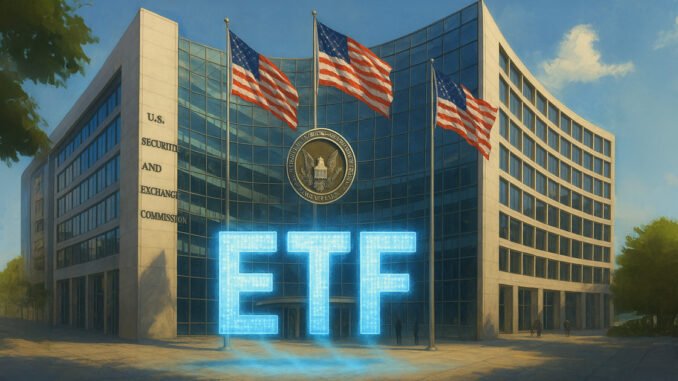
The US Securities and Exchange Commission (SEC) could soon approve spot exchange-traded funds (ETFs) for digital assets with a strong futures market presence.
A recent filing from the Chicago Board Options Exchange (CBOE) offers new clues about how the agency may approach crypto ETF approvals in the future.
SEC’s crypto ETF listing standard
On July 30, Bloomberg ETF analyst Eric Balchunas revealed that the SEC’s proposed standards suggest a key requirement that the digital asset must have traded as a futures contract for at least six months.
According to him, Coinbase’s derivatives platform would serve as the reference market for the intending issuers. Coinbase is the largest crypto exchange in the US.
Balchunas explained that Coinbase lists more crypto futures than the CME, giving it broader coverage. Since Coinbase includes native and CME-based futures, the SEC could view it as a more comprehensive benchmark.
His colleague, James Seyffart, added that this framework effectively lets the Commodity Futures Trading Commission (CFTC) determine which tokens qualify. If the SEC adopts this rule as proposed, assets approved for futures trading may automatically become eligible for spot ETF packaging.
Seyffart added:
“There’s nothing in there about market cap/size requirements. Underlying market liquidity. Float% requirements. Nada. All about futures markets for now. At least until a spot crypto exchange joins the ISG. Right now only ‘coinbase derivatives’ is a member from pure crypto standpoint.”
Which crypto assets makes the cut?
The rule would allow ETF issuers to list spot products for primary tokens with long-standing futures activity if finalized.
These include Bitcoin, Ethereum, Litecoin, XRP, Dogecoin, Cardano, Solana, Shiba Inu, Polkadot, Avalanche, Chainlink, Stellar, Hedera, and Bitcoin Cash. Each has maintained over six months of trading activity on Coinbase’s derivatives exchange.
However, newer or more speculative tokens like Bonk and Trump Coin, which lack established futures markets, would need to follow a different path.
These assets could be packaged into ETFs using the Investment Company Act of 1940—a more restrictive and complex route known as the “40 Act structure.” Balchunas cited the example of the REX Shares Solana ETF as a potential model for these assets.
This alternative structure allows products to launch without needing a 19b-4 filing. Still, most issuers prefer the Securities Act of 1933 for spot ETFs, as it offers simpler compliance and more direct exposure.
Mentioned in this article







Be the first to comment